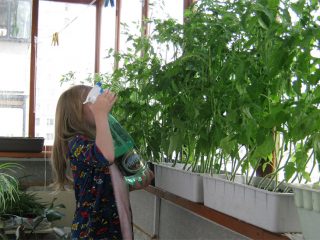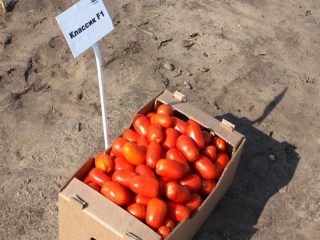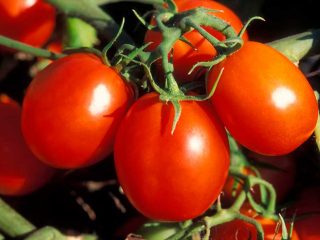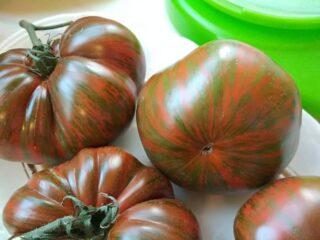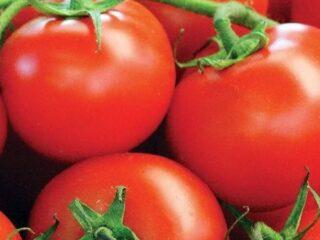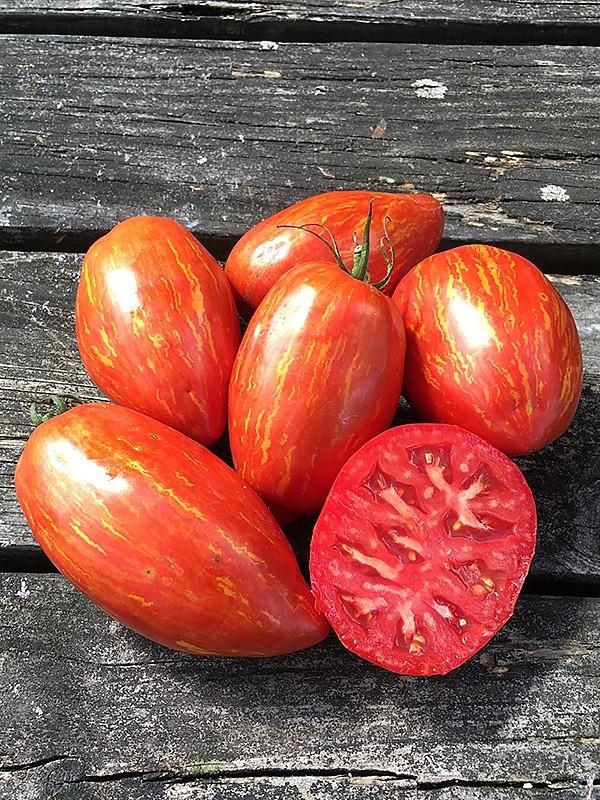Content
There are many varieties of yellow tomatoes that are highly prized by gardening enthusiasts. Such varieties have high decorative properties and productivity, which made them popular among summer residents. One of the best representatives of yellow varieties is the Anna German tomato. You can get acquainted with the intricacies of its cultivation in this article.
When and who brought it out

Yellow-fruited tomatoes are easy to grow even for an inexperienced gardener, if you follow the subtleties of agricultural technology
A variety of tomatoes with an eloquent name was bred in Russia by Moscow breeder I. Maslov. The Anna German variety appeared in the 80s of the last century, but became in demand among gardeners in all CIS countries only in 2021. The tomato is not certified by the State Variety Commission. This is a variety of completely folk selection.
Description and characteristics of tomato Anna German
A distinctive feature of the yellow-fruited variety is the original oval shape of the fruit and the presence of a “spout”. The Anna German tomato looks like a lemon.Many people confuse it with the Wonder of the World variety, but genetically, these plants have many differences. This is an indeterminate, mid-season, racemose species with high productivity. It is widely grown commercially.
Description of the variety Anna German:
- The bushes grow spreading, vigorous, up to 2 m high. They require staking and pinching. It is better to form 1-2 stems to avoid overgrowth. Up to 40 inflorescences appear on the brush.
- The fruits are oval-shaped, with a spout, and reach a rich yellow color during ripening. The weight of one tomato is 100 g. The fruits are fleshy, with thick skin, and do not crack in rainy weather. They are created for whole fruit preservation. The variety is famous for its excellent taste.
Summer residents also note the versatility of using the fruits of the nightshade crop.

The fruits of Anna German smell pleasant
Maturation period
Bushes of this variety are considered early ripening. The fruits ripen 105-110 days after the first shoots appear. The ripening period for yellow-fruited tomatoes is July-September.
Tomato yield Anna German
Up to 30 beautiful fruits ripen on one bush; about 5 kg of harvest can be harvested. From 1 sq.m. it turns out 15-18 kg of yellow tomatoes. If the crop is grown in a greenhouse, more crops can be harvested.
Resistance to adverse factors
Yellow tomato has average immunity to diseases characteristic of the crop (late blight, verticillium and mosaic). To prevent the development of diseases, you need to regularly check the bushes for possible pathogens and take preventive measures that involve treating them with chemicals.
The Anna German variety is heat-loving, very sensitive to cold, especially to sharp frosts.Plantings must be covered for the winter; it is advisable to mulch the root zone and cover the bushes with agrofibre. Preparations for wintering are carried out at the end of October or beginning of November, depending on the climate in the growing region. The shelter is removed in early April, when the threat of return of night frosts has passed.
In what regions is it grown?
The originator recommends growing yellow tomatoes in open ground in the South. Gardeners from the Central and Northern regions should grow tomatoes in greenhouse conditions.
Purpose and application
In cooking, domestically selected tomatoes are used fresh, lightly salted or dried. They are used to make preparations for the winter, combining them with red and pink types of tomatoes. Tomatoes also make an excellent sauce. The high decorative value of the bushes allows them to be used in site decoration.

Tomatoes are ideal for canning due to their shape, size and consistency.
Advantages and disadvantages
Unlike red tomatoes, the Anna German variety is devoid of red pigment. Because of this, it is considered hypoallergenic.

The originator declared excellent shelf life of mid-season tomatoes in a cold place for up to 1.5-2 months
Pros:
- versatility of use in cooking;
- the possibility of cultivation in different soils; in open ground, experienced gardeners recommend growing tomatoes only for residents of the southern regions;
- high yield, bushes bear fruit abundantly in the greenhouse and in the open area;
- excellent appearance and commercial quality, durable skin prevents fruit from bursting Anna German, ensures good transportability;
- long fruiting period, the harvest can be harvested before the first frost.
Minuses:
- excessive tendency to form stepchildren;
- the bush needs regular pruning;
- need for a garter during fruiting;
- low immunity to late blight.
Subtleties of cultivation
The originator I. Maslov developed and tested in practice special agricultural technology for this variety. Tomato is grown using the seedling method. The rooting age is 60-65 days.
When growing yellow tomatoes, it is preferable to use the following technique:
- plant up to four young bushes per 1 sq.m.;
- form a tomato into 1-2 stems;
- pruning the bush once every 10 days;
- If tomatoes grow in a greenhouse, regularly ventilate the beds.
Planting algorithm:
- 60 days before the expected planting date, the seeds are sown in the ground. They are sprinkled with a layer of soil up to 1 cm to create optimal humidity and temperature. On cloudy days, it is advisable to illuminate the planting with a special lamp. This helps strengthen the sprouts, they will become more stable.
- In the spring in the southern regions, seedlings are planted in the garden. Residents of the northern regions should grow yellow tomatoes in a greenhouse. It is advisable to transplant the seedlings to a permanent place after the threat of return of night frosts has passed.
- As the tomatoes bloom and ripen, the lower leaves on the stem are removed. This is necessary to stimulate the flow of nutrients to the fruit-bearing sprouts, and subsequently to the fruits.
- The bushes take stepson after 1-1.5 weeks.

Planting yellow tomatoes requires reliable protection from drafts, moderate fertilizer and watering
The crop is moistened only as the top layer of soil dries completely.One bush will require 1 liter of settled water at room temperature. When the fruits reach a size of 3 cm, the rate of irrigation liquid is doubled.
Disease and pest control
When growing yellow tomatoes in greenhouse conditions, they often get sick due to temperature disturbances and high humidity. Plantings are subject to late blight, rot and cladosporiosis. In open areas, it is also difficult to fight diseases. Solanaceous crops growing in the garden are more often attacked by diseases and pests. To cure tomatoes from fungal diseases, biofungicides are used, for example – Fitosporin, Revus.

Treatment of bushes is carried out according to the instructions indicated on the packaging of the drug.
Conclusion
The Anna German tomato has established itself as a high-yielding variety with excellent keeping quality, excellent taste and versatility of fruit use. Planting of seedlings is carried out approximately at the end of April or beginning of May. The bushes require standard care, which includes timely watering, fertilizing, and treatment against diseases and beetles.
Reviews from gardeners about tomatoes Anna German
